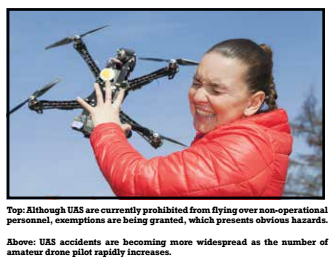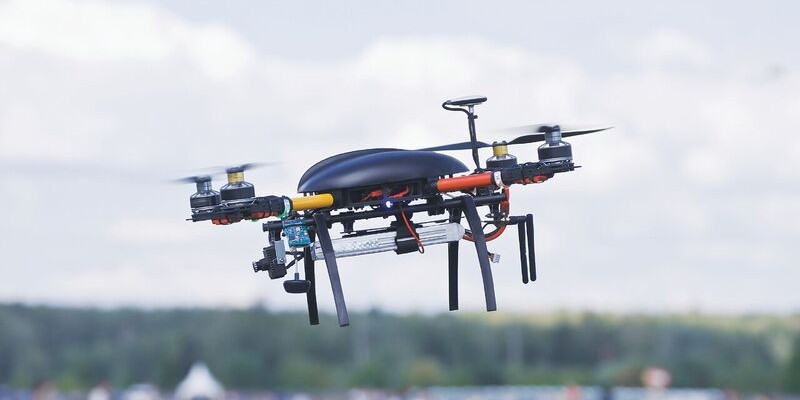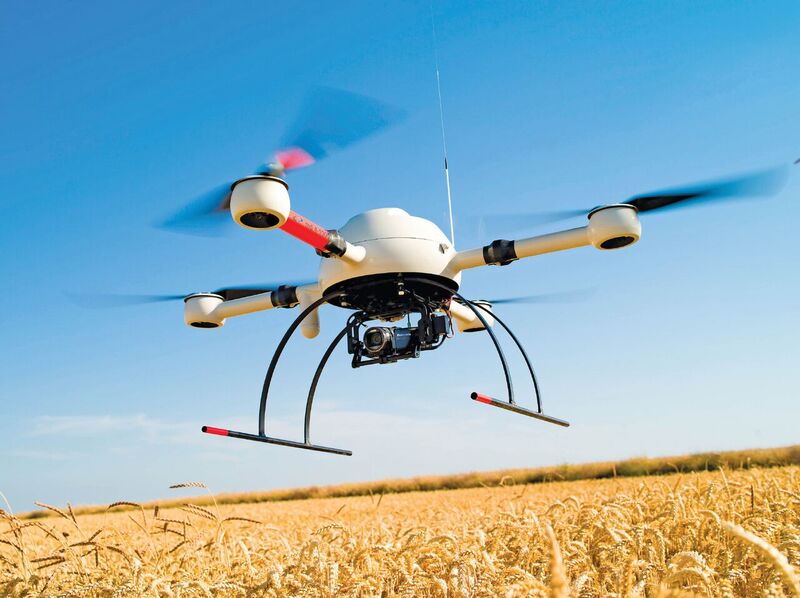Insurance Coverage for UAVs in 2017
It’s inevitable.
 If you own a UAV, chances are that you will experience a (hopefully only minor, but potentially major) type of accident-related claim involving that UAV due to human or technical error or to weather. Having been a broker in the insurance industry for more than 30 years, I have good news: you can be proactive before anything happens, and protect yourself, your UAV, and others.
If you own a UAV, chances are that you will experience a (hopefully only minor, but potentially major) type of accident-related claim involving that UAV due to human or technical error or to weather. Having been a broker in the insurance industry for more than 30 years, I have good news: you can be proactive before anything happens, and protect yourself, your UAV, and others.
There is a rapidly growing onslaught of UAVs in the sky, and given the law of large numbers, we will soon be seeing a growing frequency of UAV claims to go with them. If you think that accidents happen only to people who are careless, consider this scenario.
For Example: Oops
You have decided to take your aerial mapping/surveying/inspection business to new heights (no pun intended). You are flying a project. You have taken the right training classes and precautions; you understand how your UAV operates and have maintained it well. You have collected valuable data for your assignment and are about to wrap up the day.
Suddenly, just as you are beginning to land your UAV, it starts tumbling from the sky, inadvertently hitting a passerby on the head on its way down, and slams to the ground.
Your nerves are raw. Even though it was an accident, you feel bad that an innocent person was hit by your UAV. You identify the person but can’t determine the severity of injuries. Bewildered, you leave the scene wondering what the protocol is for such a situation. Will the person be all right? Will there be a lawsuit?
And, what about your UAV: Was it destroyed in the fall along with your data? What would it cost to repair or replace? As you recover from the shock, your mind is racing through the limitless repercussions and how you can protect yourself. Do you have an insurance policy for your business? Do you have an insurance policy for your UAV? Nothing?
How to Avoid This
Here is what we know. Your business policy will likely exclude aircraft (yes, UAVs will fall into the definition of aircraft by insurance standards). The policy that would provide coverage in the example above is a commercial UAV insurance policy. This would provide coverage for the bodily injury to the struck person along with the physical damage the UAV sustains from slamming to the ground.
Having the right coverage and sufficient limits will protect you and your business in the event litigation ensues from the accident example described here, as well as many other scenarios.
Policy Details
Underwriters will be looking for a risk that presents as “good risk.” For example, is the aircraft operation and use safe? Is it at a safe distance from people or property? Does it have safety features for loss of power or loss of communication? Does it operate to and from a safe and secure location? Losses have a higher compounding effect than just insurability. It may result in loss of life, company reputation, uninsured losses, or even bankruptcy.
Based on FAA operating rules for commercial use of UAVs, the insurance industry addresses coverage issues ranging from invasion of privacy to aerial surveillance issues and data collection. In addition to the critical coverages listed here, underwriters want to know:
- What is the pilot’s experience?
- How long has the UAV model been commercially operational?
- Who is the manufacturer?
- What are the details of the UAV, including areas of operations and height flown?
- What is the claims record?
- How does it land?
- Will it be flown in populated areas?
- What is the intended use or application?
Your typical policy will provide liability for bodily injury and/or property damage. My insurance company, Poms and Associates, recommends no less than $1,000,000 in limits to start, and many clients require higher limits by contract with their customers.
We can insure the UAV (the hull), payload (such as camera equipment, sensors, packages/slung items), ground station/control unit, spares/accessories for the actual physical damage it sustains, subject to a deductible.
Other kinds of coverage include:
- product liability,
- contractual liability,
- medical payments,
- hijacking: cyber and terrorism, and
- worldwide coverage.
Poms focuses on risk management and loss control to help minimize and mitigate potential claims. The relationships we have with our UAV insurance carriers position us to negotiate the most current and favorable terms and pricing for our clients for 2017 and beyond. We encourage you to shop around for the best fit for your company.


